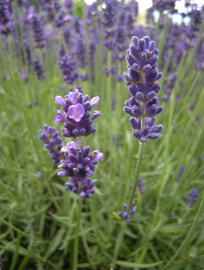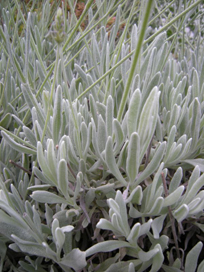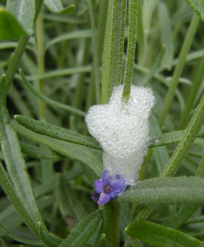Lavender is one of those easily propagated plants found in many British gardens, though native to the Mediterranean. It has one drawback: as it ages the plant becomes woody and falls apart in the centre.
Semi-ripe cuttings taken during this month will root readily and make a decent replacement plant for setting out next May.
Lavandula angustifolia ‘Hidcote’ is a reliable, even-flowered cultivar. The tightly packed lilac flowers are set on stalks that keep the blooms an even distance above the green foliage with the classic lavender scent. The oils from lavender plants are used in many herbal extracts and distilled as lavender water.
Lavandula lanata, native to southern Spain, is covered with grey lambs ear foliage. Bruising the leaves releases a menthol scent. Long, gangly flower spikes reach to one meter, dividing two or three times as growth progresses.
All lavenders appreciate a dry, sunny situation with an open, free-draining soil. Where this is not provided, plant loss can occur through a wet winter.
Lavender is also a host to cuckoo spit, as seen in the below image. This is produced by the nymph of the froghopper, a sap-sucking insect. Eggs are laid in the plant tissue in late summer and hatch the following spring. As the emerging nymph feeds on the host plant, it excretes sap which it pumps full of air. This frothy spit-like exudate protects the immature nymph from drying out. Closer investigation of the spit reveals the small green nymph.



